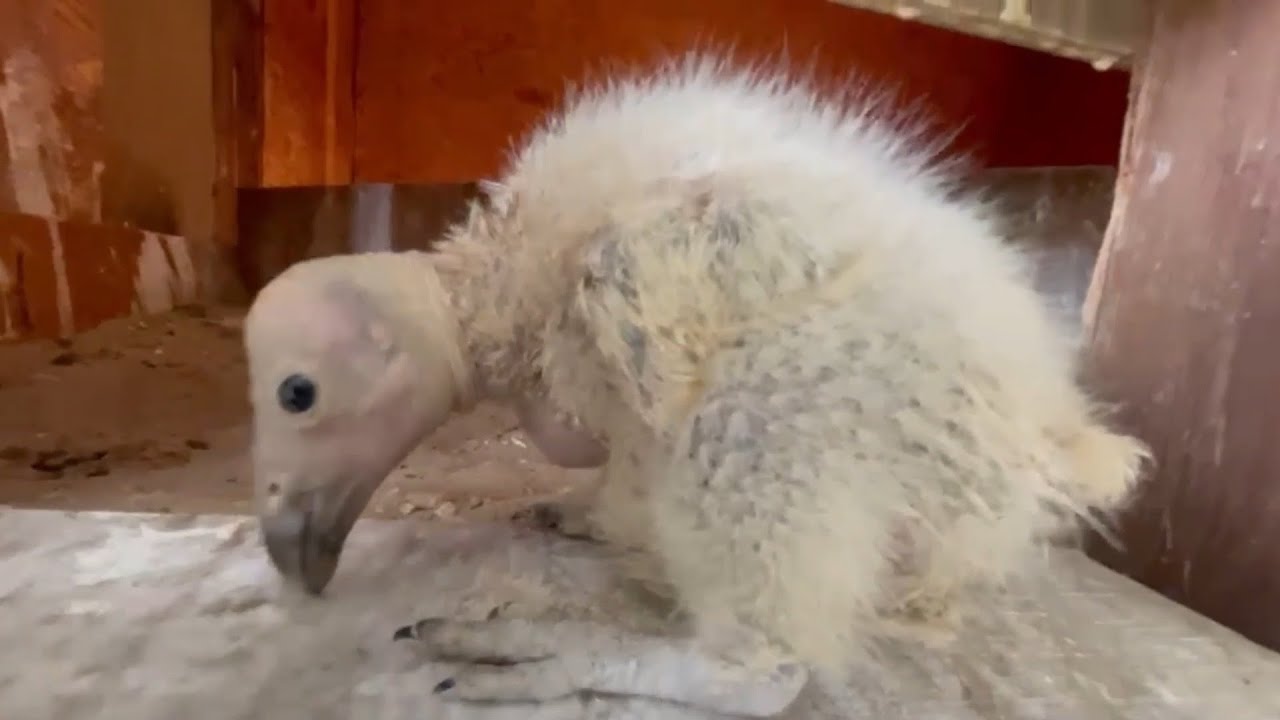– Introduction to California condor chick LA124 and its significance in the conservation efforts
– The role of zoos in wildlife conservation and education, focusing on the San Diego Zoo’s efforts with California condors
– Challenges faced in the conservation of California condors and strategies employed to ensure their survival
– The educational impact of sharing moments like the hatch of LA124 on public engagement and support for conservation
– Insights into the future of wildlife conservation, leveraging technology and community involvement
The recent hatch of California condor chick LA124 marks a significant milestone in the ongoing efforts to conserve this critically endangered species. With a population that once teetered on the brink of extinction, each new addition to the California condor population represents a beacon of hope for its continued survival and recovery. The story of LA124 is not just a narrative about a single bird’s entry into the world; it encapsulates the broader challenges and achievements in the realm of wildlife conservation, highlighting the critical roles that zoos play in preservation efforts, the complex challenges facing species conservation, and the power of public engagement fostered through sharing these moments.
Zoos have evolved significantly over the years, transitioning from mere exhibitions of exotic wildlife to becoming vital centers for conservation and education. The San Diego Zoo, a leader in these efforts, has been at the forefront of the fight to save the California condor from extinction. Their breeding program, research initiatives, and educational campaigns are pivotal. Through meticulous care, scientific study, and engaging the public with stories like that of LA124, zoos are playing a crucial role in saving a species and raising awareness about the importance of biodiversity and conservation.
The conservation of California condors has been fraught with challenges. There are many hurdles, from habitat destruction and lead poisoning to the complexities of breeding in captivity. However, conservationists have employed a range of strategies to combat these issues. These include habitat restoration, public education campaigns on the dangers of lead ammunition, and innovative techniques to breed and reintroduce condors into the wild. The hatch of LA124 is a testament to these strategies’ effectiveness, showcasing conservationists’ resilience and the potential for human intervention to positively impact the fight against extinction.
Engaging the public’s interest and support for conservation efforts is another crucial element in the battle to save endangered species. The video of California condor chick LA124 emerging from its shell is a powerful tool. By sharing these intimate moments of conservation success, zoos and conservation organizations can foster a deeper connection between the public and wildlife, inspiring support and involvement in conservation efforts. This engagement is vital for garnering the necessary funding, political will, and public support to continue these crucial activities.
In the future, wildlife conservation like the California condor will increasingly depend on leveraging technology, community involvement, and international cooperation. Innovations in tracking, veterinary care, and habitat monitoring offer new tools for conservationists. Moreover, building global communities around conservation, engaging local populations in preservation efforts, and fostering international collaboration will be key to overcoming the global challenge of biodiversity loss.
The story of LA124 offers a microcosm of the broader efforts in wildlife conservation, encapsulating the challenges, strategies, and hopes that define this critical field. By understanding the significance of each hatch, the role of zoos, the hurdles overcome, and the path forward, we can appreciate the intricate tapestry of efforts that go into saving a species like the California condor from extinction. Through this understanding, we can all support these endeavors, ensuring a brighter future for our planet’s biodiversity.
*****
Source Description
It’s California condor breeding season, and five chicks have already hatched this year at the L.A. Zoo. Meet LA124! Coming in a little hot, this fiery fuzz ball is the first California condor to hatch this year. “This was the earliest that a California condor egg has ever been laid at the L.A. Zoo,” explains Animal Keeper Debbie S. “We weren’t expecting our first egg of the season for another week or two.” After LA124 hatched, keepers performed a quick wellness check on the chick while the adults were out of the nest box. They also removed some shell with blood and membrane for a DNA test to see if the chick is male or female. At the Zoo, California condor chicks are primarily raised by adult condor pairs with minimal human interaction. They’re monitored via non-invasive remote cameras, allowing Animal Keeper Chandra D. to keep a close eye on LA124. “He’s healthy, happy, and fashionably early to everything so far,” she quips.
Learn more about LA124, other new hatchlings, and the collaborative California Condor Recovery Program at: https://bit.ly/3UlANCN
Follow along as we highlight each chick hatched this year in our behind-the-scenes #LAZooCondorStories!
#CaliforniaCondor #Condor #ZooBabies
📹: Animal Keeper Mike C.

